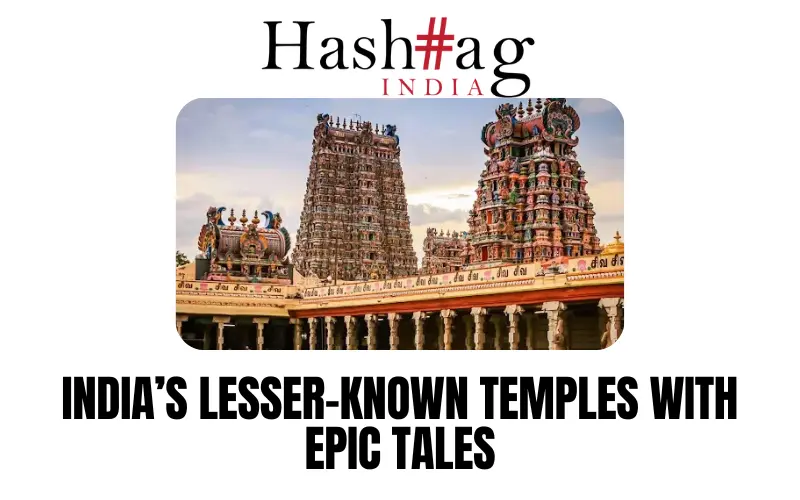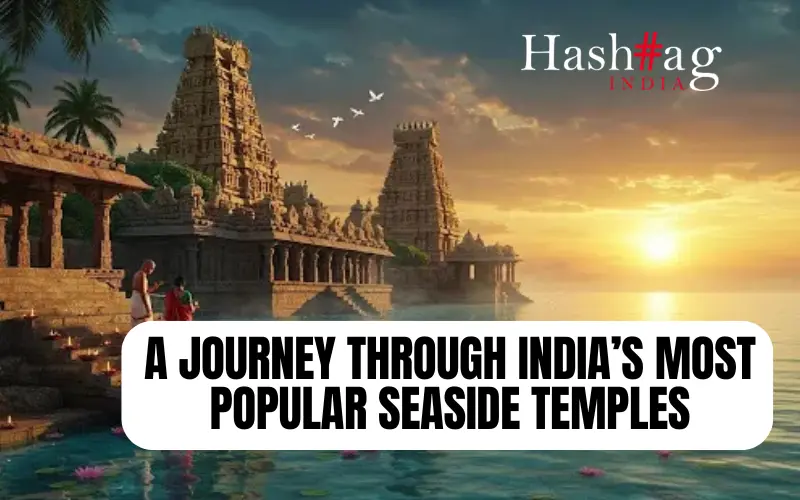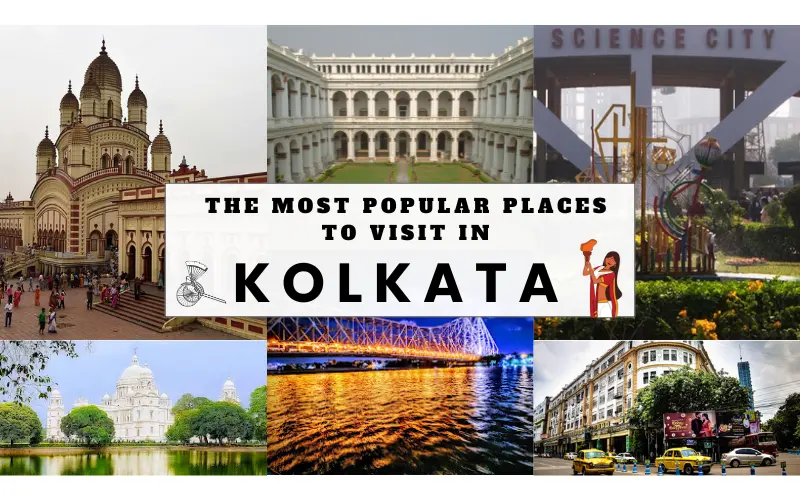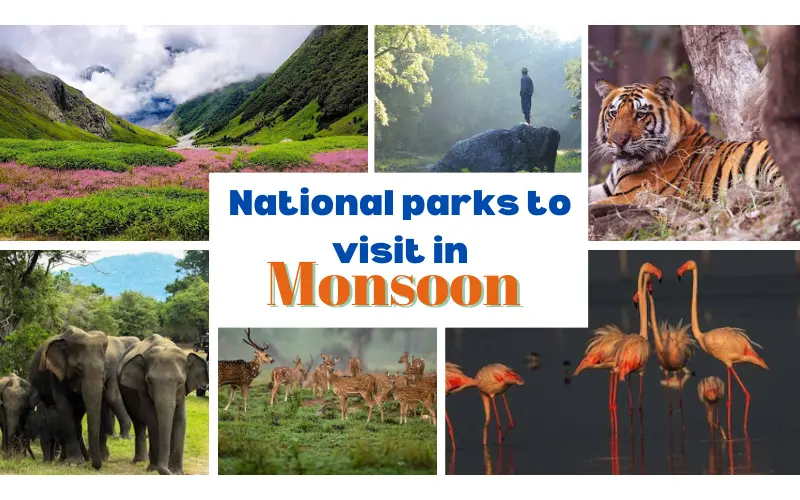India, a land of diverse cultures and faiths, is home to a rich tapestry of ancient temples that whisper secrets of the past. Among these, the Shakti Peeths are a group of sacred temples that hold a special place in Hindu mythology. Scattered across the Indian subcontinent, these temples are believed to be the sites where the goddess Sati’s body parts fell, making them sacred spots for devotees.
For centuries, these temples have been shrouded in mystery, their secrets and legends passed down through generations of priests, devotees, and travelers. From the snow-capped mountains of Himachal Pradesh to the sun-kissed plains of Tamil Nadu, each of these temples has its unique story to tell, its own secrets to reveal.
In this journey, Hashtag Magazine will delve into the mysteries of 8 hidden temples in India, exploring their history, mythology, and cultural significance. We will unravel the secrets of these ancient shrines, and discover the legends that have shaped the faith and traditions of millions of devotees.
Kamakhya Temple, Assam
The Kamakhya Temple, located in the heart of Assam, is one of the most revered Shakti Peeths in India. This ancient temple is dedicated to the goddess Kamakhya, who is believed to be the embodiment of female energy. The temple’s unique architecture and stunning natural surroundings make it a must-visit destination for any traveler.
The Kamakhya Temple is situated atop the Nilachal Hill, which offers breathtaking views of the surrounding landscape. The temple’s architecture is a blend of Hindu and Buddhist styles, reflecting the cultural and artistic influences of the region. The temple’s sanctum sanctorum houses the revered goddess Kamakhya, who is worshipped in the form of a yoni, symbolizing the feminine principle.
According to legend, the Kamakhya Temple is the site where the goddess Sati’s womb fell, making it a sacred spot for devotees. Sati, the consort of Lord Shiva, is said to have immolated herself in a fire after being insulted by her father, Daksha. Lord Shiva, grief-stricken and enraged, carried Sati’s body on his shoulders, wandering the earth. Eventually, the body parts fell at various locations, which became the Shakti Peeths.
The Kamakhya Temple is a significant pilgrimage site for devotees of Shaktism, who believe in the worship of the divine feminine. The temple’s annual festival, the Ambubachi Mela, attracts millions of devotees from across the country. During this festival, the temple’s doors are closed for three days, and the goddess is believed to be menstruating. The festival is a celebration of the feminine principle and the cyclical nature of life.
Taratarini Temple, Odisha
The Taratarini Temple, perched atop a hill in the picturesque town of Brahmapur, is a hidden gem that is steeped in mythology. This ancient temple in India is dedicated to the goddess Tara, who is believed to be the embodiment of female energy. The temple’s stunning architecture and breathtaking views of the surrounding landscape make it a must-visit destination.
The Taratarini Temple is situated on the banks of the Rushikulya River, which offers stunning views of the surrounding landscape. The temple’s architecture is a blend of Kalinga and Odishan styles, reflecting the cultural and artistic influences of the region. The temple’s sanctum sanctorum houses the revered goddess Tara, who is worshipped in the form of a deity.
According to legend, the Taratarini Temple is the site where the goddess Sati’s breasts fell, making it a sacred spot for devotees. The temple’s annual festival, the Chaitra Parba, attracts thousands of devotees from across the region. During this festival, the temple’s doors are closed for three days, and the goddess is believed to be worshipped in secret.
The Taratarini Temple is a significant pilgrimage site for devotees of Shaktism, who believe in the worship of the divine feminine. The temple’s stunning architecture, breathtaking natural surroundings, and rich cultural heritage make it a must-visit destination for any traveler.
Dakshineswar Kali Temple, West Bengal
The Dakshineswar Kali Temple, located on the banks of the Hooghly River, is a famous Shakti Peeth that is dedicated to the goddess Kali. This stunning temple is known for its intricate architecture and beautiful gardens, making it a popular destination for travelers.
The Dakshineswar Kali Temple was built in 1855 by Rani Rashmoni, a devout follower of the goddess Kali. The temple’s architecture is a blend of Hindu and Islamic styles, reflecting the cultural and artistic influences of the region. The temple’s sanctum sanctorum houses the revered goddess Kali, who is worshipped in the form of a deity.
According to legend, the Dakshineswar Kali Temple is the site where the goddess Sati’s toes fell, making it a sacred spot for devotees. The temple’s annual festival, the Kali Puja, attracts millions of devotees from across the country. During this festival, the temple is decorated with flowers, lights, and other offerings, and the goddess is worshipped with great fervor.
The Dakshineswar Kali Temple is also famous for its association with Sri Ramakrishna, a revered spiritual leader who was the temple’s chief priest. Sri Ramakrishna is said to have attained spiritual enlightenment at the temple, and his teachings and legacy continue to inspire devotees to this day.
Mahakaleshwar Temple, Madhya Pradesh
The Mahakaleshwar Temple, located in the heart of Ujjain, is one of the most revered Shiva temples in India. This ancient temple is dedicated to the worship of Lord Shiva, who is revered as the destroyer of evil and the protector of the universe.
The Mahakaleshwar Temple is situated on the banks of the Shipra River, which offers breathtaking views of the surrounding landscape. The temple’s architecture is a blend of Hindu and Islamic styles, reflecting the cultural and artistic influences of the region. The temple’s sanctum sanctorum houses the revered lingam of Lord Shiva, which is worshipped with great fervor.
According to legend, the Mahakaleshwar Temple is one of the 12 Jyotirlingas, or sacred sites where Lord Shiva’s divine light is said to have manifested. The temple’s annual festival, the Mahashivratri, attracts millions of devotees from across the country. During this festival, the temple is decorated with flowers, lights, and other offerings, and the lord is worshipped with great fervor.
Jwalamukhi Temple, Himachal Pradesh
The Jwalamukhi Temple, located in the picturesque town of Jwalamukhi, is a famous Shakti Peeth that is dedicated to the goddess Jwalamukhi. This stunning temple is known for its intricate architecture and beautiful gardens, making it a popular destination for travelers.
The Jwalamukhi Temple is situated in the Kangra Valley, which offers breathtaking views of the surrounding landscape. The temple’s architecture is a blend of Hindu and Sikh styles, reflecting the cultural and artistic influences of the region. The temple’s sanctum sanctorum houses the revered goddess Jwalamukhi, who is worshipped in the form of a flame.
According to legend, the Jwalamukhi Temple is the site where the goddess Sati’s tongue fell, making it a sacred spot for devotees. The temple’s annual festival, the Navratri, attracts millions of devotees from across the country. During this festival, the temple is decorated with flowers, lights, and other offerings, and the goddess is worshipped with great fervor.
Bhramaramba Devi Temple, Telangana
The Bhramaramba Devi Temple, located in the picturesque town of Srisailam, is a famous Shakti Peeth that is dedicated to the goddess Bhramaramba. This stunning temple is known for its intricate architecture and beautiful gardens, making it a popular destination for travelers.
The Bhramaramba Devi Temple is situated on the banks of the Krishna River, which offers breathtaking views of the surrounding landscape. The temple’s architecture is a blend of Hindu and Dravidian styles, reflecting the cultural and artistic influences of the region. The temple’s sanctum sanctorum houses the revered goddess Bhramaramba, who is worshipped in the form of a deity.
According to legend, the Bhramaramba Devi Temple is the site where the goddess Sati’s neck fell, making it a sacred spot for devotees. The temple’s annual festival, the Navratri, attracts millions of devotees from across the country.
Shri Naina Devi Temple, Himachal Pradesh
The Shri Naina Devi Temple, located in the picturesque town of Naina Devi, is a famous Shakti Peeth that is dedicated to the goddess Naina Devi. This stunning temple is known for its intricate architecture and beautiful gardens, making it a popular destination for travelers.
The Shri Naina Devi Temple is situated on a hilltop, offering breathtaking views of the surrounding landscape. The temple’s sanctum sanctorum houses the revered goddess Naina Devi, who is worshipped in the form of a deity.
According to legend, the Shri Naina Devi Temple is the site where the goddess Sati’s eyes fell, making it a sacred spot for devotees. The temple’s annual festival, the Navratri, attracts millions of devotees from across the country. During this festival, the temple is decorated with flowers, lights, and other offerings, and the goddess is worshipped with great fervor. The temple’s location also offers stunning views of the Gobind Sagar Lake, which is a popular spot for boating and fishing.
Shri Chamundeshwari Devi Temple, Karnataka
The Shri Chamundeshwari Devi Temple, located in the picturesque town of Mysore, is a famous Shakti Peeth that is dedicated to the goddess Chamundeshwari.
The Temple is situated on the Chamundi Hills, offering breathtaking views of the surrounding landscape. The temple’s architecture is a blend of Hindu and Dravidian styles, reflecting the cultural and artistic influences of the region. The temple’s sanctum sanctorum houses the revered goddess Chamundeshwari, who is worshipped in the form of a deity.
According to legend, the Shri Chamundeshwari Devi Temple is one of the 18 Maha Shakti Peeths in India, or sacred sites where the goddess Sati’s body parts fell. The temple’s location also offers stunning views of the city of Mysore, which is a popular tourist destination.
Our journey through the 8 mystical temples of India has been a revelation, uncovering secrets and legends that have been shrouded in mystery for centuries. From the snow-capped mountains of Himachal Pradesh to the sun-kissed plains of Karnataka, each temple has revealed its unique story, architecture, and cultural significance. These sacred sites embody the power and mystery of the divine, inviting devotees and travelers to experience the magic and mystique of India’s spiritual heritage.





























